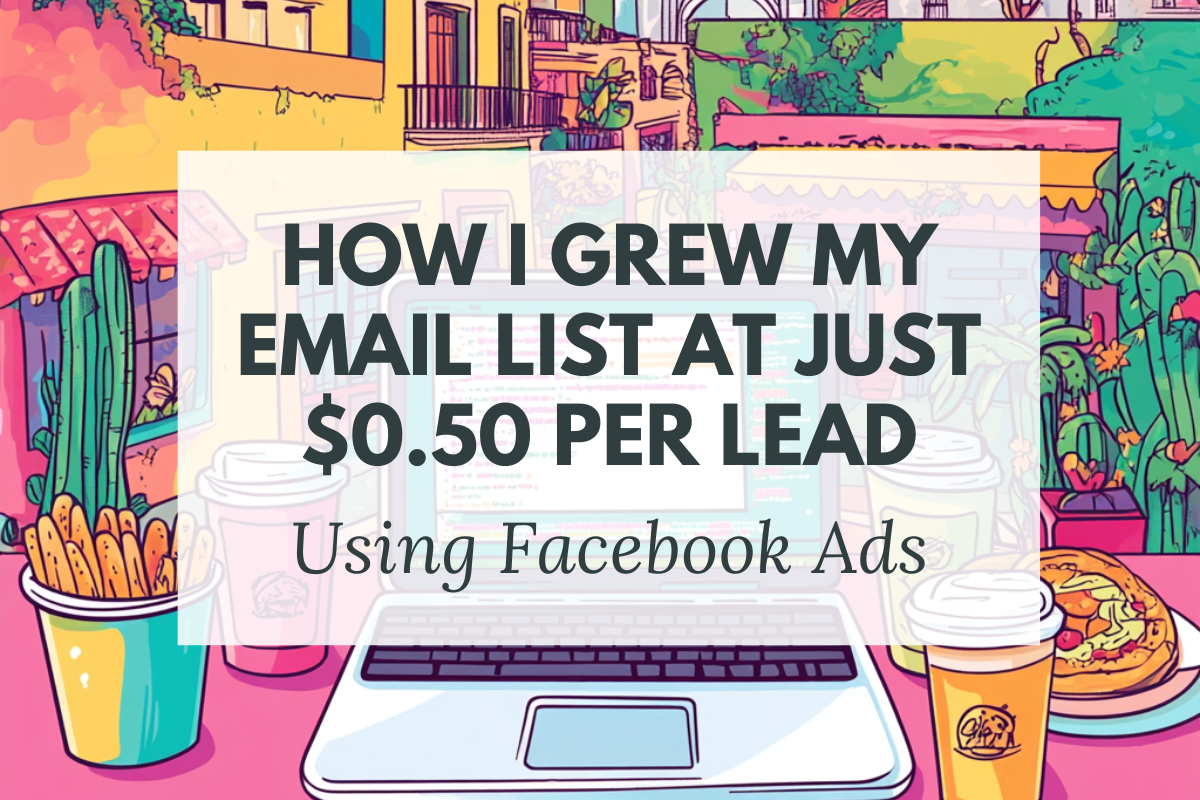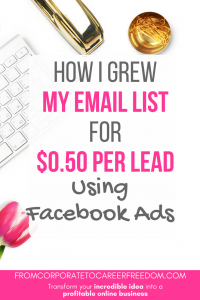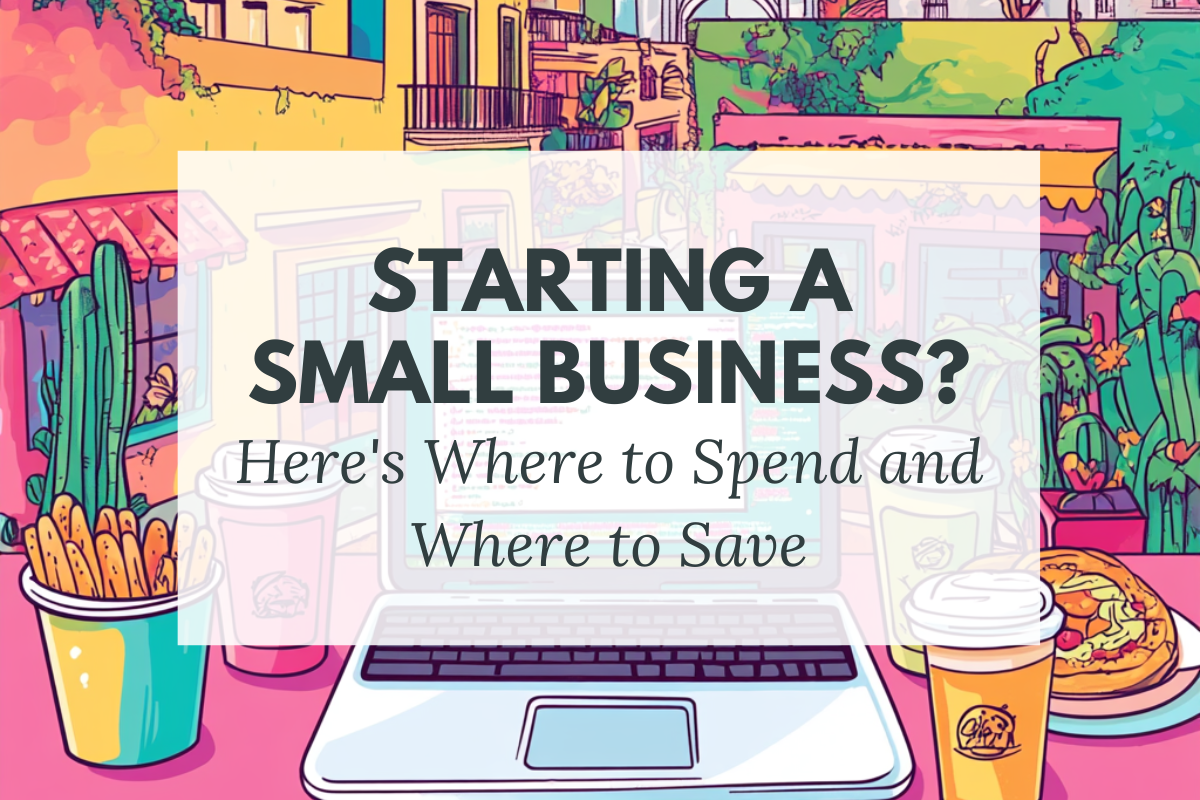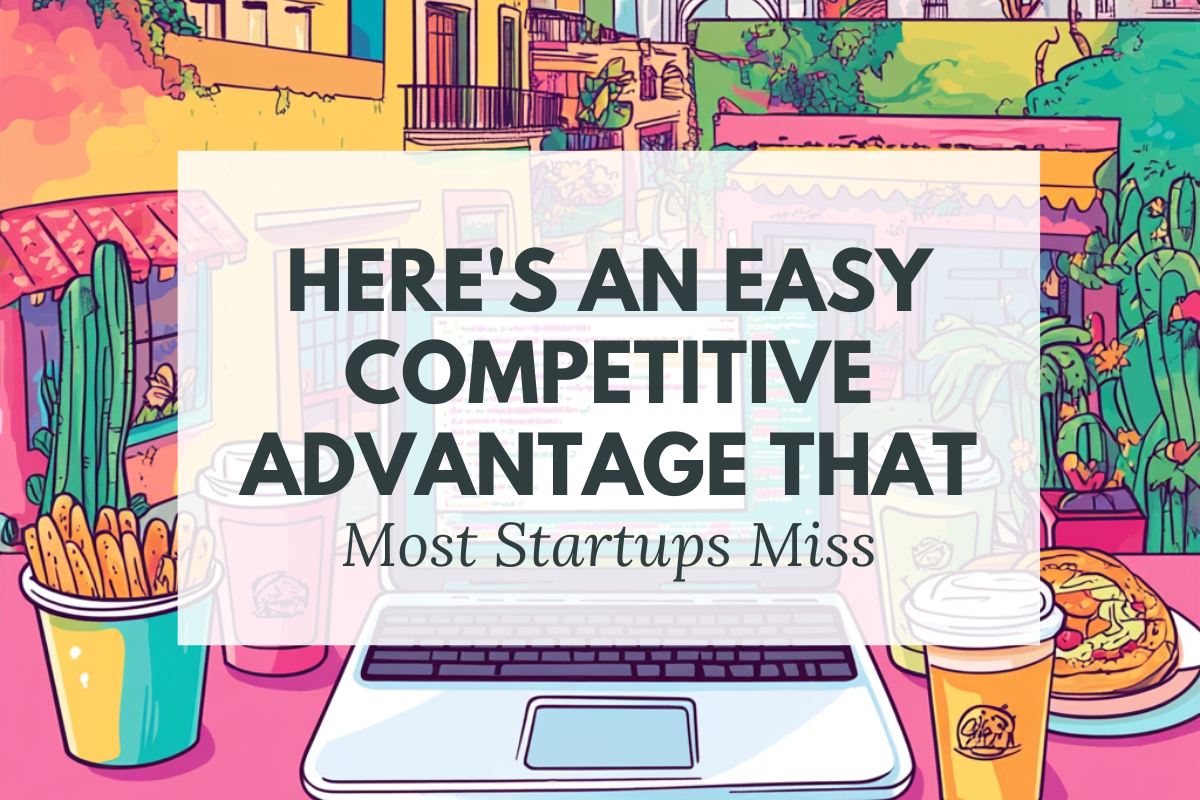I want to begin this post by revealing a shocking statistic I uncovered in my own marketing efforts these past few weeks, because the whole point of this post is to convince you of the benefit of Facebook ads, and these statistics strengthen my point far better than my meagre writing could.
The Facebook Ads Statistic
I compared, like-for-like, a Facebook ad campaign with a mobile ad campaign. The mobile ad campaign was 14 times more expensive than the Facebook campaign.
Please note this post may contain affiliate links. Please refer to my disclosure for more information.
What I Tested
Now some background: I often test different advertising methods. I guess that’s my analytical side kicking in. I don’t take at face value what other people suggest works, but I like to try out different tactics and actually measure the results.
So last week, I thought I’d test out mobile advertising, as it’s something I’ve never done before and since mobile is on the up, I suspected it would be an area with a lot of promise that not many advertisers would think of tapping into.
So in short, this is what I did:
I created an ad campaign on a mobile advertising platform. I used Buzzcity as it was something recommended to me by an experienced affiliate marketer (by the way, affiliate marketers who do high volumes of advertising are the best online resources when it comes to discovering untapped resources). One of the reasons he recommended it was because of the hugely tempting pricing they offered ($0.01 per click? Yes please).

I created some basic banners, created a standard ad campaign with few tweaks, and targeted it at mainly English speaking countries (e.g. US, Canada, Australia, UK etc).
I sent traffic direct to my opt-in page. This is the landing page I use to send new traffic to, to give visitors the chance to opt-in to whatever offer I have on at the time. You can read more about opt-in pages in a blog post I wrote on Leadpages

As I’m on Leadpages, it automatically registers the conversions for me. So I know how many people signed up to my email list in relation to how many people clicked on the page.
So this conversion rate is the statistic I really want to show you, because the results were really interesting. Because before I did this mobile advertising campaign, I ran exactly the same campaign on Facebook.
During the Facebook campaign, I managed a conversion rate of 49%. Here’s a screenshot:

What you can see from the video below is that I was getting conversions at just $0.50. By any comparison, that’s an amazing figure, and I’d hazard a guess that most businesses with a decent revenue model can grow their business when they’re paying just half a dollar per lead.
Now, I expect Facebook conversion rates to be high because Facebook does an excellent job at allowing you to narrow down your target market. If you know what you’re doing, you can narrow it down enough to get a really excellent conversion rate. So I never expected the mobile advertising to match it.
The Results
But what surprised me was just how poor the mobile advertising was in comparison. On the same campaign, I only achieved a single – one – conversion out of 677 clicks to my landing page. So that’s a conversion of 0.14%.
There are some possible reasons why this is so low. For example, I know myself when browsing on mobile how easy it is to accidentally click on an ad when you are on a small screen. And I have to take into account that the categories offered on Buzzcity offer me far less in the way of targeting, so those clicks may have largely come from users who just weren’t interested in my offer. But the staggering difference between the two conversion rates: 50% vs 0.14%.
Now let’s compare the costs. I got a cost per click on my Facebook advertising for $0.50. So based on that, I can get 200 new opt-ins for every $100 I spend.
To get 200 new opt-ins from mobile, I would have to pay for 142,857 clicks to my opt-in page. I know each click costs me exactly $0.01, so it would cost me $1428.57.
Which brings me back to the point I made at the start of this post: mobile advertising was 14 times more expensive than Facebook advertising.
I know a lot of people find Facebook advertising frustrating. I can understand why. The Power Editor isn’t the most user-friendly tool in the world, to say the least, and if you aren’t targeting your ads properly, then your cost per conversion can quickly go through the roof. So I can see why it’s perceived as expensive (especially in comparison to how cheap it used to be). But from my own experience, I still believe it’s one of the most effective advertising platforms around, and my latest test goes a step closer to proving that theory.
So What Worked?
Here’s the burning question I know you’re probably asking: how did I manage to get leads from Facebook at just $0.50 each? So I want to share with you the five strategies that really helped me to achieve that:
- Firstly, I had a compelling offer. Many people will tell you to offer the earth on an opt-in, but actually that sort of breadth of information puts people off if they haven’t heard from you before. What works better is a short, sharp offer that gives something of immediate value to your audience.
- Secondly, know your audience! Study them. Find out what they want. The more you know your audience, the easier it will be to attract the right people on Facebook.
- Thirdly, test your targeting. Don’t target 20 different interests when you’re running an ad. Compare different ad sets and target different interests in each one. What you’ll find is that some interests will give you far cheaper leads than others. Test, refine and ditch the expensive ad sets.
- Fourth, create consistency in your message. Don’t offer one thing in your ad copy, and take people to a landing page that has completely different wording. It’s confusing and will put people off. So be consistent.
- Finally, test your landing page. Split test two or three different versions so you can find the ad set that works the best.
What I also want to suggest to you is this: be patient. Many people have shockingly bad results the first time they advertise on Facebook, and it puts them off for life. But if you have the patience to study your results, tweak your ads, and continue to test, it will pay off. It may cost from the outset, but hod your nerve. And once you have a winning ad, that ad can often run for a long time and often give you very profitable returns, so it’s well worth investing the time to get it right.
What To Do Next
There’s no doubt Facebook ads can be an exceptionally profitable way of running your business. However – and I can’t stress this strongly enough – if you start an ad account, create an ad and just hope for the best, you could end up hundreds of dollars in the red. Many businesses have done just that. It’s potentially very profitable, but only if you know what you are doing. So, I would strongly recommend that you at least take a short online course in it first so you have some background and plan of attack.
I used to run a Facebook ads course in Udemy, but as I haven’t had the time to update it in a while, I won’t promote it here but will recommend another course instead created by a guy called Justin O’Brian, because it’s excellent, extremely comprehensive, and it’s very up to date (which is important).
So if you do want to start doing Facebook ads, have a look at this course first (or any course for that matter – you just need to have some sort of foundation knowledge before you jump in the deep end and start handing Facebook your hard earned cash). Here’s a link to the course:
Facebook Ads And Facebook Marketing Mastery Guide 2017 – Get It Now
So now over to you: I’m interested in hearing your thoughts and comments about your experience in running a profitable ad campaign. Have you tried different methods? Have you found that one advertising platform really stands shoulders above the rest? Leave your comments below.





This is the kind of case study everyone considering running ads needs to see. May I suggest another study? I would love to know how your results compare between your Facebook ads and remarketing / retargetiing ads.
Gail Gardner recently posted…Developer Salaries: How to Maximize DevOps Income #careers
Hi Gail! I think that’s a great idea. It would definitely be an interesting comparison. Consider it added to my blog schedule and I’ll let you know when it’s up.
Yes, it’s not just about the cost per click (as you mention); it’s about the cost per conversion. If you get more clicks but low conversion, it generally doesn’t do you much goo.
Debbie Gartner recently posted…Solid vs Engineered hardwood – which is better?
Absolutely. I always tell clients to focus on conversions vs traffic. It’s so important to measure.
Pingback: Learn How 44 Experts Use Facebook Ads To Drive Traffic To Their Blogs
Great article! Thanks, I’m actually busy doing the Facebook Add course by Justin O’Brian and loving it.
Very good article. I am impress of your article. Facebook is main for a good SEO.
A very good case study! What niche did you do your ads in?
business startups – thanks for the comment!